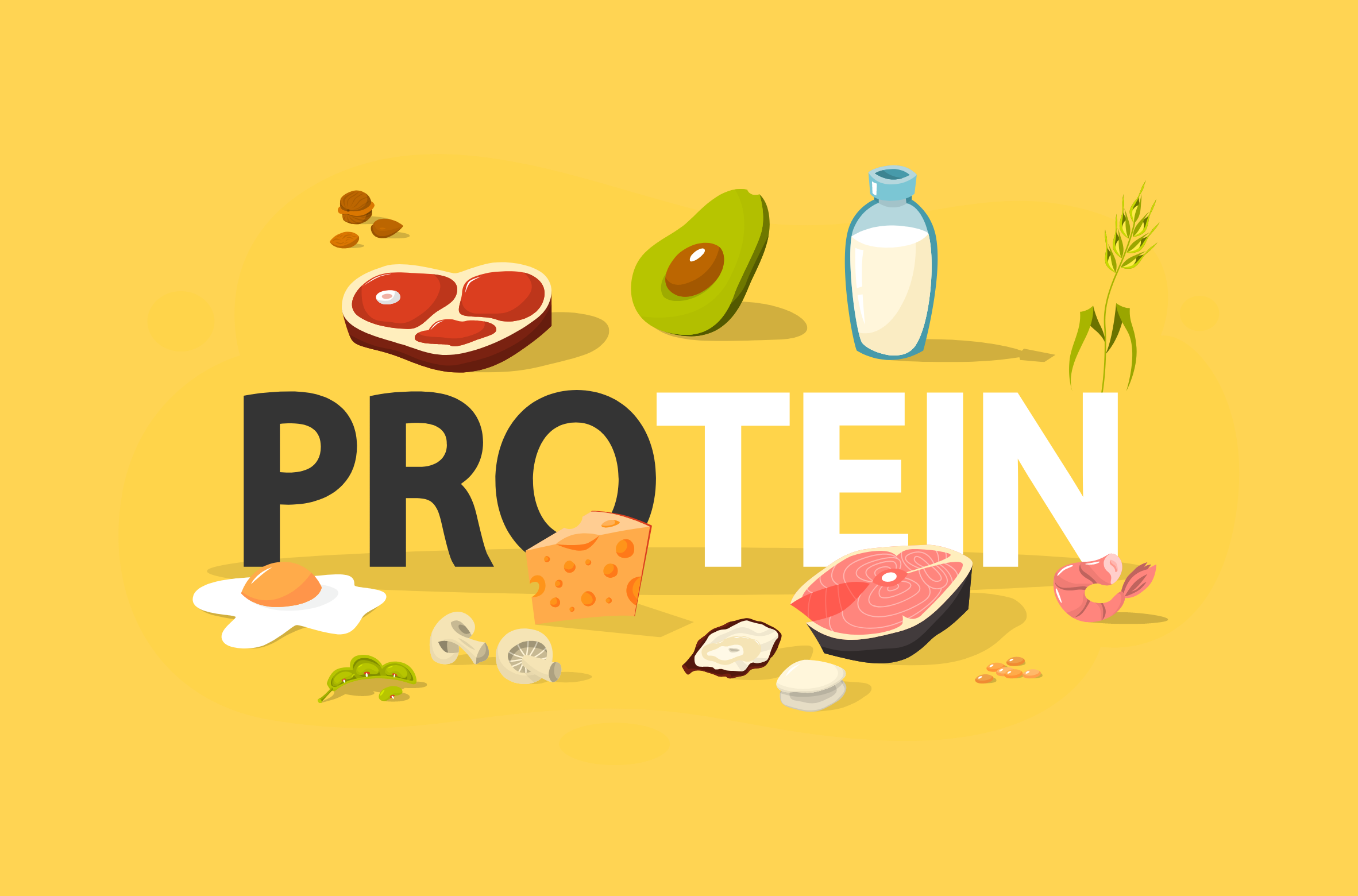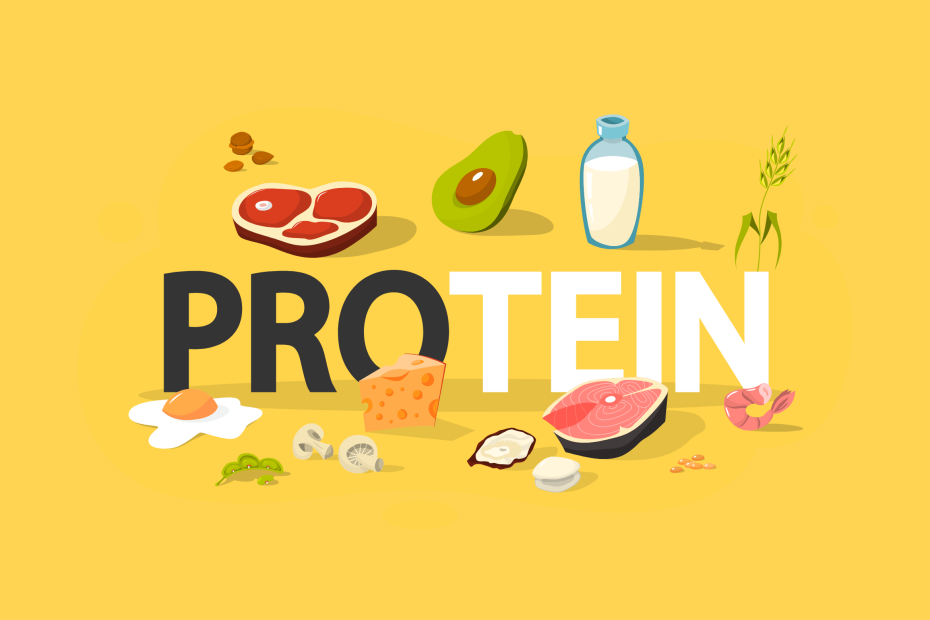(After you read this, the pro will be you!)
How do you know you’re drinking too many protein shakes? You’ve had whey too much!
Apologies for the pun—and if it didn’t make sense, whey (pronounced “way”) is one of the primary proteins in dairy products. People often add it to shakes and smoothies in powder form.
Protein is found everywhere in our bodies, from our hair to our toenails and almost every place in between. Because protein is so important, it’s common to think we need to eat a lot of it, and to worry that we’re not getting enough. But are our fears realistic? Read on to find out!
Protein 101
There are at least 10,000 different proteins in our bodies, carrying out critical functions in every body system, from circulatory and digestive to muscular and skeletal—to name just a few!
All proteins are made from just 20 building blocks called amino acids, of which 9 have to come from food (our bodies don’t make them). For this reason, these 9 are called “essential amino acids.”
Sources of Dietary Protein
Many, many foods are great sources of protein:
• Meat (examples: poultry, pork, beef)
• Seafood (examples: fish and shellfish)
• Dairy products (examples: milk, cheese, eggs)
• Legumes/pulses (examples: soybeans, peas, lentils)
• Nuts (examples: walnuts, almonds, peanuts)
How Much Is Okay to Eat?
Because protein needs vary between people of different ages, sexes, fitness levels, and special circumstances such as pregnancy or bodybuilding, the USDA Guidelines are quite broad, recommending that protein intake be between 10% to 30% of daily calories.
That said, many people are surprised to learn that they need less protein than they thought.
The National Academy of Medicine recommends eating, per day, 0.8 grams of protein for every kilogram of body weight. (Click here for a pound-to-kilogram converter, or just divide the number of pounds by 2.205 to get kilograms.)
So, using that formula, a 140-pound person with no special circumstances (pregnancy etc.) needs just 50 grams—or 1.8 ounces—of protein per day! That’s slightly more than the weight of a McDonald’s hamburger patty. (For calculations for conversions, see table below.)
| Pounds (lbs.) to Kilograms (kg)
140lbs/ 2.205=63.5kg |
Grams (g) needed, based on kg
63.5kgx0.8=50.8grams |
Grams to ounces (oz)
50.8g¸28.35=1.8oz |
Quality Control
It’s now probably clear that in countries like the US, protein sources are abundant, and most people are not at risk of getting too little protein. But, along with your protein, you may also be getting other things you don’t need.
As the Harvard School of Public Health points out, a 4-ounce sirloin steak provides 33 grams of protein (~1.2 ounces), but also 5 grams of saturated fat (0.17 ounces). Meanwhile, a 4-ounce salmon steak provides 30 grams of protein, but only 1 gram of saturated fat. In addition, the salmon is a great source of healthy omega-3 fats.
The point here is that not all protein is equivalent, and two foods with similar amounts of protein can be very different in terms of other nutrients.
Pro Tip: Add beans, peas, and lentils (also known as pulses) to your diet. They are high in protein, vitamins, and minerals; they also have fiber and healthy fats.
The Bottom Line
Whenever you feel overwhelmed by nutritional information, just remember a few key things. When you have a choice:
• Choose plant-based protein over animal-based protein
• Pay attention to the overall quality of your protein—is it accompanied by other healthy nutrients, like fiber and vitamins (beans), or does it come with unhealthy fats and a lot of salt (cheeses)?
• Choose to eat less protein, if you find you’re already getting more than you need
Fun fact: When it comes to protein, insects are more nutritious than cows. 100 grams of sirloin has 29 grams of protein and 21 grams of fat, while 100 grams of grasshoppers has 20 grams of protein and only 6 grams of fat. Inspired by these kinds of nutrition stats, the company Chirps is making snack chips out of flour made from crickets!
Sources:
Harvard School of Public Health
National Academy of Medicine Dietary Reference Intakes, 2005 (downloadable)
Nutritious Insects
USDA Dietary Guidelines
 share
share



